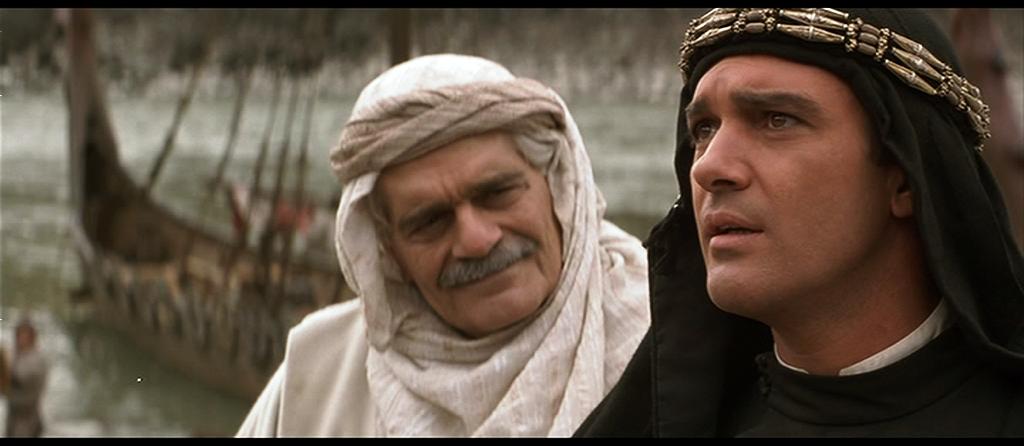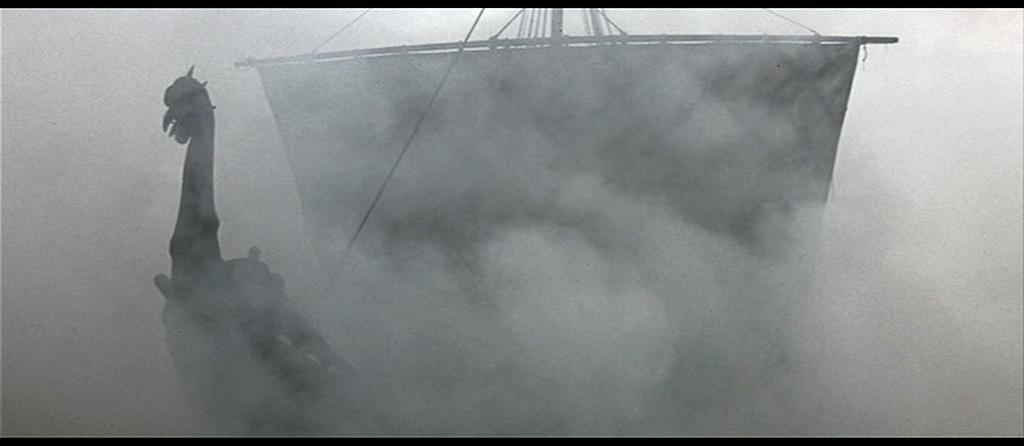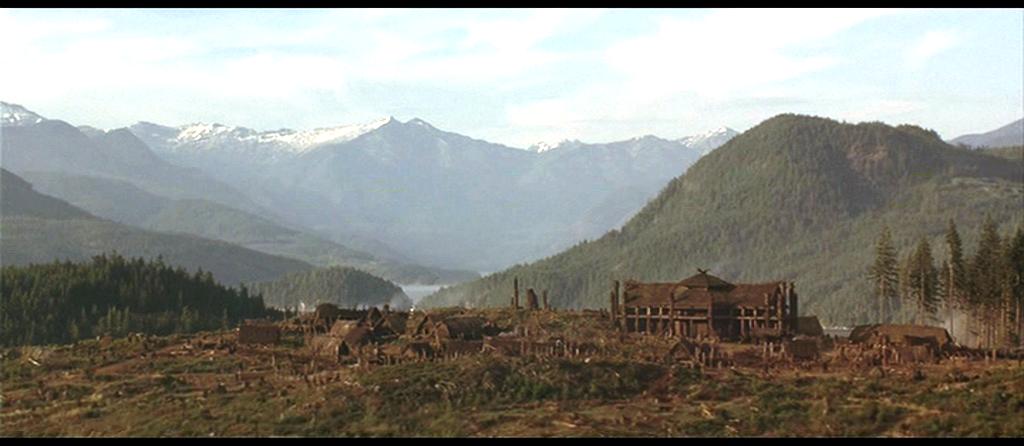
A project which possessed enormous potential, John McTiernan’s adaptation of Michael Crichton’s 1976 novel Eaters of the Dead, The 13th Warrior proved an ungainly chimera upon release, as an attempt to update a hoary branch of adventure cinema, calling back to the likes of The Vikings or The 7th Voyage of Sinbad (both 1958) but giving that kind of sword-waving, seafaring action tale a gritty modern gloss. Troubled in production and brutalised in test screenings, The 13th Warrior was the subject of heavy reshooting and second-guessing, some of it apparently supervised by Crichton himself, but the result was still a gruelling box office flop. The film we ended up with is neither a misjudged gem nor a calamitous failure, but a mildly entertaining rump of what might have been something exceptional. The storyline offered undoubted substance and conceptual intrigue, and some of that still shines through the fog of production calamity. Crichton’s narrative placed real-life Arab diplomat and historian Ahmad ibn Fahdlan (Antonio Banderas) in the midst of events that will be transmitted in legend as the Beowulf saga, but purveyed here with a cunning anthropological twist. Ahmad makes contact with the Northman warriors led by Buliwyf (Vladimir Kulich) in central Rus, and travels with them back to Scandinavia to help King Hrothgar (Sven Wollter) in his frantic struggle against not literal monsters but strange, vicious, cannibalistic Neanderthal-like remnants known as the Wendol.

Sometimes The 13th Warrior hums with a sense of moment and purpose, building tension and a sense of grandeur, but too often it barely hangs together. The filmmaking is rife with awkwardly shot, dimly lit, confusingly edited fight sequences, littered with poorly delineated, weak characterisations, and discontinuous story threads. For instance, a sub-plot involving Hrothgar’s wicked son Wiglif (Anders T. Andersen), who lurks with all the dastardly, phlegmatic, effeminate aplomb of a Jay Robinson or Roddy MacDowall Caesar, but who never gets around to serving a substantive function in the storyline. Or the romance between Ahmad and Viking chick Olga (Maria Bonnevie), so dutifully purveyed without any passion they hardly seem bothered to raise a saucy eyebrow at each-other. And Diane Venora is in there somewhere. Kulich’s Buliwyf is so one-dimensional in his Soviet-Realist fashion it’s hard to tell what’s so different when he finally expires sitting upright in a statuesque pose. Even before the re-editing and re-shooting, one suspects the script was a half-hearted mess.

The film’s problematic action scenes are also a reminder that McTiernan played a definite part, already apparent with Die Hard With a Vengeance (1995), in helping usher in an era of hosepipe framing, eye-jerking camerawork, and visually illiterate editing, for constructing action set-pieces as a kind of blurry op-art. Here, it’s not helped by poor, pseudo-realistic lighting, with major confrontations that are virtually incomprehensible. An elaborate early action scene when the animalistic (yet horse-riding and tactically sophisticated, a contradiction not engaged with at all) enemy assault Hrothgar’s fortified village sees a barrage of shots that render the spacial relationship of any one character and event to another so indistinct they could be in different countries.

The final confrontation, although riding the wave of some well-constructed tension and hype, as the heroes make their reckonings with gods and prepare for a terrible, outnumbered onslaught, is similarly disappointing because it’s over almost before it begins, Buliwyf’s defeat of his nemesis, the horn-wearing general of the Wendol, like so many other aspects of the film, seems the product of a distracted director. The whole film, indeed, says too much about the worst tendencies of modern Hollywood

Nonetheless, the film remains watchable, because for all its flaws it is based in strong, intriguing material, and just enough of that spirit survived the adaptation. The onward sweep of the story, beginning as familiar quest saga and shading into historical mystery, before becoming a bruising few-against-many fight-fest, has some of the drive and palpable energy McTiernan had once commanded so effortlessly. Momentum builds because, for the all the bare-bones characterisations and jittery storytelling, such lacks have never necessarily harmed a B-Movie swashbuckler. The 13th Warrior works up a certain matinee enthusiasm in scenes like that in which the Vikings answer the call of an old soothsayer woman to join Buliwyf’s party, and when they finally invade the Wendols’ caverns, swaying from ropes and plunging down flooded tunnels with an aplomb not a great distance from Island at the Top of the World. Banderas is reasonably supple and charismatic in his interesting but underwritten role, but Dennis Storhoi, as Herger, his best buddy amongst the Northmen, gives the most enthusiastic performance. Omar Sharif, who took a temporary retirement from acting because of his bad experience with this film, lends some weight of both cinema history and movie star status to the early scenes, but his presence remains another dissatisfying, denuded teaser.

The 13th Warrior also stands out for presenting an Islamic Arab not only as heroic but as the spectator’s avatar as a model of faith and civilisation and the viewpoint through which to approach the rough, grotty, pagan forebears of so much of subsequent European society. Whilst what’s left of the film fails to investigate the historical milieu it constructs with much dexterity, nonetheless the production offers a dark, dirty, innately physical world with convincing detail, and tantalising little ideas – like making the Wendol pantheists who worship an idol resembling the Venus of Willendorf – keep it just buoyant enough to keep afloat. The result is a film both intriguing for its ambitions and all too frustrating in its failings.


















